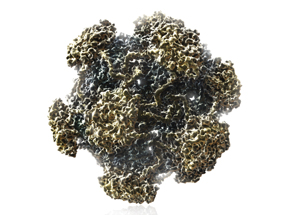Navigating the improvement activity component of MIPS
The Quality Payment Program created by the Medicare Access and CHIP Reauthorization Act of 2015 (MACRA) is not as intimidating as it sounds—at least for 2017, which is a transition year that will determine what internists are paid in 2019.
The Quality Payment Program created by the Medicare Access and CHIP Reauthorization Act of 2015 (MACRA) is not as intimidating as it sounds—at least for 2017, which is a transition year, yet will determine what internists are paid in 2019. One aspect of the new program, the improvement activity component, provides internists with a chance to succeed in the new payment system by working to improve patient engagement, care coordination, and patient safety.
The Merit-Based Payment System (MIPS), which is part of the Quality Payment Program created by the Medicare Access and CHIP Reauthorization Act of 2015 (MACRA), is based on a clinician's performance in four reporting categories. Improvement activities are a new category and worth 15% of the MIPS score. The other three are quality (replacing the Physician Quality Reporting System and worth 60% of the total MIPS score), cost (replacing the value-based modifier and worth 0% during the transition year), and advancing care information (ACI) (replacing Meaningful Use and worth 25%).
The January Practice Tips column discussed the ACI category. This month, we will look at the improvement activities category, which will account for 15% of the total MIPS score.
An improvement activity is an ongoing exercise or activity that strives to improve clinical practice and thus outcomes. Clinicians can choose from over 90 improvement activities in nine subcategories: expanded patient access, population management, care coordination, patient engagement, patient safety, health equity, integration of behavioral health, participation in an alternative payment model, and emergency preparedness/response. Clinicians may choose any activities that work in their practices; there are no requirements to choose activities in any particular subcategory.
In general, eligible clinicians and groups who choose to participate fully in the improvement activity category in 2017 and want to achieve the maximum score in this performance category will need to earn up to 40 points for activities that have been ongoing for a period of at least 90 days. “High-weighted” activities earn 20 points, and “medium-weighted” activities earn 10 points. Thus, clinicians can perform two high-weighted 20-point activities, four medium-weighted 10-point activities, or any other combination that adds up to 40 points in the calendar year to achieve the maximum score. (Small practices, which are defined as those with fewer than 15 clinicians, or clinicians practicing in a rural or health professional shortage area will only need to earn 20 points by completing one high-weighted or two medium-weighted activities.) Certified patient-centered medical homes (or subspecialty practice equivalents) automatically receive full credit for this category.
Following are a few examples of high-weighted (worth 20 points) and medium-weighted (worth 10 points) improvement activities:
- Glycemic management services (20 points). During 2017, for at least 60% of patients who have diabetes and who are on prescribed antidiabetic agents, clinicians must attest to having documentation of an individualized glycemic treatment goal that takes into account patient-specific factors, including at least age, comorbidities, and risk for hypoglycemia, and reassessing this goal at least annually.
- Prescription drug monitoring program (20 points). During 2017, before issuing a Schedule II opioid prescription that lasts for more than 3 days, clinicians must consult with their state's prescription drug monitoring program at least 60% of the time.
- 24/7 access to clinicians who have real-time access to the medical record (20 points). Provide access to the care team for advice about urgent and emergent care, such as during the evening or on weekends; use approaches to increase access to care by eligible clinicians and groups, such as e-visits, phone visits, group visits, home visits, and alternate locations (e.g., senior centers and assisted living centers); and/or provide same-day or next-day access to a care team member when needed for urgent care or transition management.
- Care coordination agreements (10 points). Establish care coordination agreements with frequently used consultants that set expectations for documented flow of information and group expectations between settings. Provide patients with information that sets their expectations consistently, track patients referred to subspecialists through the entire process, and/or systematically integrate information from referrals into the plan of care.
- Depression screening (10 points). Regularly conduct depression screenings and establish follow-up plans for patients with co-occurring behavioral or mental health conditions.
Clinicians who use certified EHR technology to perform any of these activities will receive bonus credit toward the ACI category. However, not all activities require an EHR. Some improvement activities could be performed using registries, a practice management system, or a common desktop application such as Microsoft Excel.
A full list of improvement activities is online. CMS has several organizations to help clinicians prepare for the Quality Payment Program, including the Transforming Clinical Practice Initiative, the Quality Innovation Network-Quality Improvement Organizations, and the Innovation Center's Learning Systems for those participating in Alternative Payment Models. The Quality Payment Program is online. ACP resources are available or by joining ACP's member forum on MACRA.




